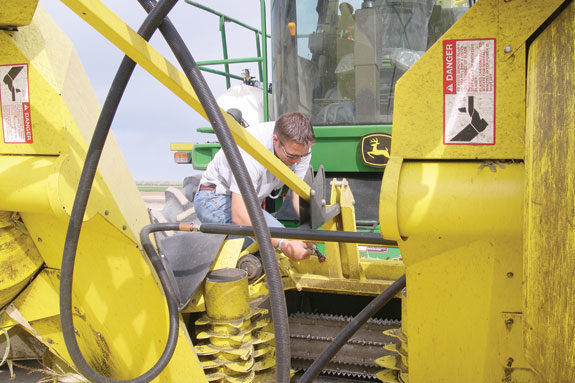Escalating commodity prices are increasing the cost to feed cows. The increase in commodity prices and the competition for crop acres is also driving up the cost of silage.
Even so, silage is still the least-expensive raw material on the farm, so it is imperative to get the most out of silage as possible. Proper silage management must be practiced from field to bunk to reduce losses and ensure a quality feed.
In order to ensure fast and efficient silage fermentation, it is crucial to utilize a silage inoculant. Research has shown that using a silage inoculant with the right combination of lactic acid bacteria and enzymes will speed the fermentation process, thus reducing losses that occur during silage fermentation.
The result is higher-quality silage and there is more available to feed. Using silage inoculant allows producers to get more out of the same amount of silage.
When selecting a silage inoculant, it is important to choose a product that has been researched and proven through independent and university studies.
It is also important to work with companies that will work with you and your harvester to ensure the inoculant is being applied correctly.
At the end of the day, if the product is not applied correctly, it will not be able to work effectively and you will not be getting the most out of your investment.
Proper application includes using application equipment that is working and is accurate. Selecting equipment that is easy to use and monitor will help inoculant application go smoothly during harvest. Prior to harvest, application equipment should be clean and calibrated.
The product of choice should be applied according to manufacturer’s recommendations. During summer months, hot temperatures can negatively affect the bacteria in silage inoculant, so it is important to keep the product cool and out of direct sunlight.
Plan ahead with your inoculant supplier and harvester to make sure the right amount of product is available and used each day based on the amount of silage being harvested.
Finally, make sure you choose to work with a company that is readily available during the harvest to troubleshoot any problems that may come up with application equipment.
This will allow for minimal downtime during harvest and ensure every bit of forage is being treated with inoculant.
When making silage, it takes a team approach to make a quality feed and keep losses to a minimum. Good communication between the producer, farmer, consultants and harvester is crucial to make sure the right amount of forage is harvested at the right time and that no steps are skipped.
Using a quality silage inoculant that is applied correctly will help retain more money in your silage.











